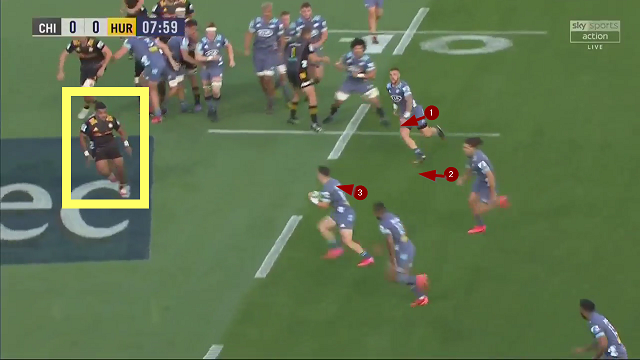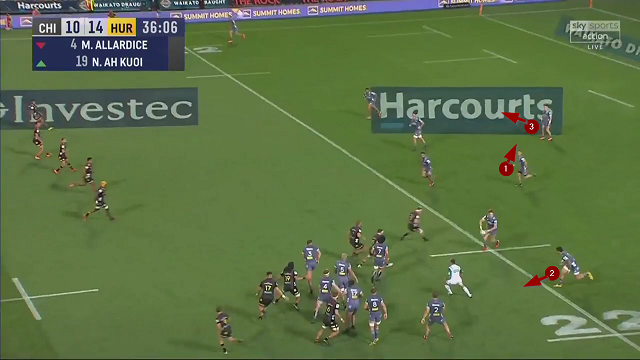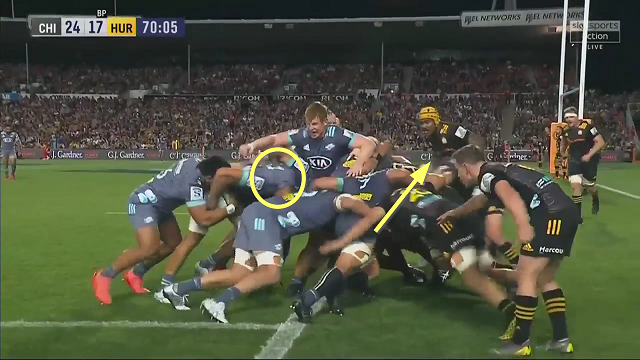How to create forward-thinking innovation in your set-piece attack
Before the start of the 2019 Six Nations, Eddie Jones lit the fuse on one of his media ‘bombs’ to ignite interest in the forthcoming tournament. He suggested that he might select nine forwards in his England team, with wing-cum-full back Jack Nowell featuring as an extra open-side flanker.
Jones predicted the emergence of a ‘new breed of player’ in the evolution of the professional game. He went to explain how he had used flanker Hendrik Tui as ‘an extra runner off 9’ during his stint as coach of Japan:
“There are great opportunities in the game to change it. There is no reason why you can’t play nine forwards. He could stand on the blindside wing…
“He (Nowell) is definitely an option (as a 7). He has great ball-carrying, great tackling skill; he puts his head over the ball, he’s a tough little bloke. He is going to be the new breed of player.
“The game has changed. The game used to be 80 minutes, now it is 100 minutes. The next change is you will have players who can play backs and forwards. Do you remember Rod Macqueen (Australia’s World Cup-winning coach in 1999)? He used to talk about it. It is going to happen. Jack Nowell is the one who stands out.”
Coach are always on the lookout for this kind of hybrid player who can change the complexion of the game and create new questions for the opposition to answer.
The Hurricanes’ open-side flanker Du’ Plessis Kirifi provided a very recent example of the new breed in the ‘Canes Super Rugby encounter with the Chiefs at the FMG stadium in Waikato.
In the course of the match, the Hurricanes found ways to use Kirifi as both an extra back and as an extra tight forward in situations from own-ball lineout. Two of Kirifi’s interventions were crucial and resulted in tries for the team from Wellington.
His first involvement occurred from an attacking lineout in the 8th minute of the game:
The set-up has Kirifi starting in the “+1” position at half-back. Typically, this is a cue for the defence to expect a lineout drive with the halfback taking the ball into a maul off the receiver.
Nobody expects a flanker to deliver a spin pass worthy of a number 9, especially after Mauro Bergamasco’s unfortunate experience against England back in 2015!
But Kirifi is able to spin a perfect pass off his right hand to first five eighth Fletcher Smith, and the impact of a forward’s ability to impersonate a back is immediately evident:

With Hurricanes’ number 9 T.J. Perenara shifting one spot further out to “1”, and blind-side wing Cobus Van Wyk already running inside Smith at “2”, the Chiefs’ defender around the end of the lineout (hooker Samisoni Taukei’aho) is clearly both outnumbered and mismatched.
The in-pass from Smith to Perenara saw the scrum-half breeze through the hole untouched to set up a try in the left-hand corner for Ben Lam later in the move.
Kirifi’s expertise as a ‘false 9’ was also of obvious value on exit plays:
Kirifi’s delivery off his left hand is a bit more wobbly than it is on the other side, but it still reaches the target (Canes’ full-back Jordie Barrett) at first receiver.

The key triangle is the same as it was in the first example. Halves T.J. Perenara (“1”) and Fletcher Smith (“2”) are both providing width out to the right; if the Chiefs’ D sits off the Hurricanes can shift the ball quickly in that direction given Perenara’s naturally left-handed pass.
When the Chiefs choose to rush up on Barrett, he has an easy bail-out option in the shape of the blind-side wing (“2” Ben Lam) to his left. Lam can take the ball up with his power and set a comfortable exit on the next phase.
Du’ Plessis Kirifi changed up his role with significant effect with the game on the line in the last ten minutes:
With the Hurricanes only five metres away from the Chief’s goal-line, a lineout drive is the natural call. However, within that Kirifi is again playing a role outside the orthodox ‘box’.

Typically, the “+1” would take the ball straight off the lineout receiver and slot into the second layer of the maul. Instead, the Hurricanes’ number 7 adopts the role of a tight forward (prop or second row) at the point of the drive. He gets a big inside push on the Chiefs’ defence, opening up the corner for attack by the ball-carrier (replacement hooker Asafo Aumua).
The winning of the game lay in the ability of a flanker to do what Eddie Jones envisaged with Jack Nowell, and successfully impersonate other positions on the field – whether it was scrum-half in back-line attack or tight forward in the lineout drive. It is one future in the game of Rugby Union which is only likely to increase in importance over time.












.jpg)

.jpg)







